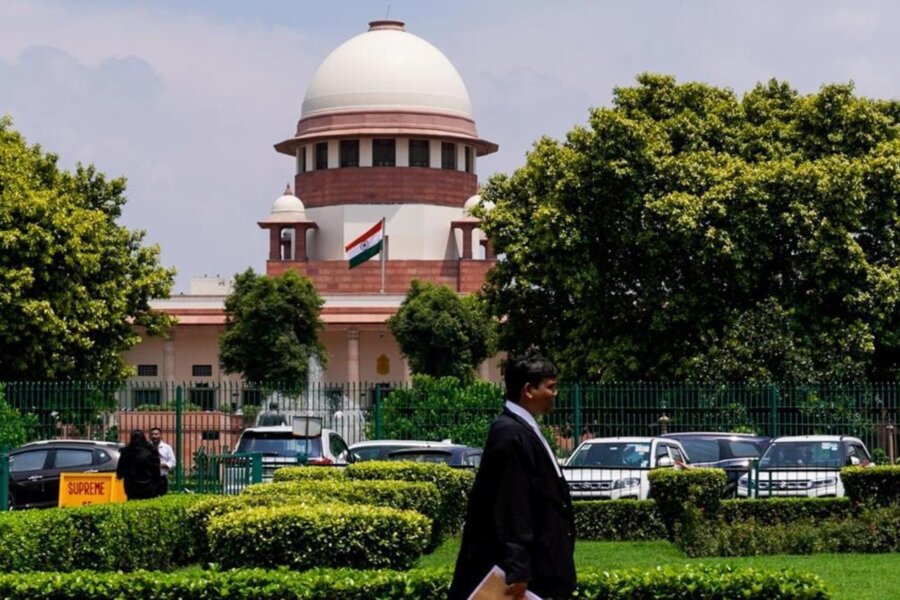Best Art & Cultural Property Law Lawyers in Surendranagar
Share your needs with us, get contacted by law firms.
Free. Takes 2 min.
List of the best lawyers in Surendranagar, India
We haven't listed any Art & Cultural Property Law lawyers in Surendranagar, India yet...
But you can share your requirements with us, and we will help you find the right lawyer for your needs in Surendranagar.
Find a Lawyer in SurendranagarAbout Art & Cultural Property Law in Surendranagar, India
Art and Cultural Property Law in Surendranagar operates within the broader Indian legal framework that protects antiquities, monuments, and works of art, along with state rules specific to Gujarat. The focus is on preserving heritage, preventing illicit trade, regulating excavation and construction near protected sites, and ensuring lawful ownership, sale, and export of cultural objects.
Surendranagar district includes historic towns such as Wadhwan and Limbdi, with temples, stepwells, fortified structures, and traditional crafts that can fall under central or state protection. Matters commonly involve registration of antiquities, due diligence for art purchases, export licensing, permissions for work near protected monuments, and action against theft or illegal excavation. Enforcement and administration involve the Archaeological Survey of India, the Directorate of Archaeology and Museums, Government of Gujarat, local police, Customs, and district authorities.
This guide gives plain language information to help you understand the landscape before you speak with a lawyer. It is general information and not legal advice.
Why You May Need a Lawyer
You may need a lawyer if you plan to buy or sell art or antiquities and want to verify provenance, ownership, and compliance. Legal help is useful to draft or review sale agreements, warranties, export or loan documents, and museum loan contracts.
Lawyers assist with registering antiquities with the Archaeological Survey of India, evaluating whether an item is an antiquity, and advising on permissions for excavation, renovation, or construction near protected monuments in and around Surendranagar.
If you discover old coins, idols, or artifacts during construction, counsel can guide you on mandatory reporting to authorities and help you avoid criminal liability. If police or Customs seize an item, a lawyer can help you respond, file representations, and seek release where justified.
For galleries and collectors, lawyers help set up compliance systems, draft consignment agreements, manage copyright and moral rights for artists, and handle tax and import duties implications. For temples and trusts, lawyers handle title, custody, and security of religious idols and heritage objects, and coordinate with authorities on protection and restitution.
If a work is stolen, trafficked, or subject to a restitution claim, a lawyer can assist with FIRs, notifications to agencies, and civil or criminal proceedings. They can also help with insurance claims, condition reports, and dispute resolution including mediation and arbitration.
Local Laws Overview
Antiquities and Art Treasures Act, 1972 and Rules, 1973 govern antiquities and certain art treasures across India. An antiquity generally means an object at least 100 years old, with some categories such as manuscripts and records having a lower threshold historically defined in the Act. Registration with the Archaeological Survey of India may be required when you own, transfer, or deal in antiquities. Export of antiquities is prohibited without a license, and certain art treasures may also require licensing.
Ancient Monuments and Archaeological Sites and Remains Act, 1958 with its 2010 amendments safeguards centrally protected monuments and sites. There is a 100 meter prohibited area and a further 200 meter regulated area around such monuments. Any construction, repair, or excavation within these zones needs prior permission or a no objection certificate from the competent authority. If a centrally protected monument exists in or near Surendranagar, these controls apply.
Gujarat has state-level protections through its own legislation for state protected monuments and sites. State rules typically mirror the central framework by restricting activities near state protected monuments and requiring permissions from the Directorate of Archaeology and Museums, Government of Gujarat. Local municipal building permissions must also align with heritage controls.
The Treasure Trove Act, 1878 requires any person who finds treasure, such as coins or artifacts, to report the find to the District Collector. Failure to report can result in penalties, and the find may be subject to government claim or regulated processes for ownership.
Customs Act, 1962 and the Foreign Trade Policy regulate import and export of artworks and antiquities. Export of antiquities is tightly controlled, and false declarations can lead to seizure, penalties, and prosecution. Import of cultural property suspected to be stolen or illicit may also be refused or seized.
Copyright Act, 1957 protects artists by granting copyright and moral rights. Galleries, museums, and buyers must respect reproduction rights, attribution, and integrity of the work. Licensing agreements are often used for exhibitions, catalogs, or digital reproductions.
Wild Life Protection Act, 1972 is relevant if an artwork uses wildlife derivatives such as ivory or certain animal parts. Trade and possession of prohibited materials can lead to serious criminal liability regardless of artistic or antique value.
Tax laws including GST and income tax can apply to art deals, gallery businesses, and cross border transactions. Rates, exemptions, and compliance obligations can be complex, so seek specific tax advice alongside cultural property counsel.
Frequently Asked Questions
What counts as an antiquity in India?
Under the Antiquities and Art Treasures Act, an antiquity generally means an object that is at least 100 years old, such as sculptures, paintings, coins, inscriptions, and other artifacts. Certain categories such as manuscripts and records have historically had a different threshold in the Act. If you are unsure, have a qualified expert or the Archaeological Survey of India assess the item.
Do I need to register an antiquity I own in Surendranagar?
Registration is required in many cases for private ownership of antiquities. You can apply through the Archaeological Survey of India office that covers Gujarat. Registration documents become part of your provenance file and are crucial if you ever transfer, loan, or insure the item.
Can I export a painting or antique from India?
Export of antiquities is prohibited without a license. Non antiquity artworks can usually be exported, but you may still need clear documentation, artist certificates, and Customs declarations. When in doubt, apply for clearance and consult a lawyer before shipping.
What due diligence should I do before buying art or antiques?
Review provenance, ownership history, import or export records, ASI registration for antiquities, authenticity reports, and any police or theft claims. Check that no protected monument or temple object has been unlawfully removed. Include warranties and indemnities in your purchase agreement.
What should I do if I discover old coins or an idol during construction?
Stop work, secure the site, and notify the local police and the District Collector without delay. You may also need to inform the state archaeology department. Do not move or sell the objects. Failure to report can result in criminal penalties.
I inherited an old idol. Can I keep it?
If it is an antiquity, you may need to register it and maintain proper records. If it is a stolen or illicitly removed temple idol, you must report it. A lawyer can help verify provenance and ensure you comply with registration and custody requirements.
Are there restrictions on building near a heritage structure in Surendranagar?
Yes. If the structure is a centrally protected monument, a 100 meter prohibited area and 200 meter regulated area apply, and you need permissions. State protected monuments have similar controls under Gujarat law. Always check the status of nearby sites before planning construction.
What happens if Customs seizes my artwork at the airport?
Customs can detain or seize items suspected to be antiquities or misdeclared goods. You will receive a notice and can respond with documents proving lawful status. A lawyer can help prepare representations, seek provisional release, or contest the seizure if appropriate.
How does copyright affect buying or exhibiting art?
Buying a physical artwork does not automatically transfer copyright. You may need a license from the artist or rights holder to reproduce images in catalogs, websites, or merchandise. Moral rights require proper attribution and prohibit derogatory treatment of the work.
How do I report theft or illegal trade of cultural property?
File an FIR with the local police in Surendranagar, notify the Archaeological Survey of India or the state archaeology department, and consider informing Customs and relevant national databases. Preserve all documentation and images to support identification and recovery efforts.
Additional Resources
Archaeological Survey of India - Vadodara Circle - the ASI office that oversees Gujarat, including antiquities registration and permissions related to centrally protected monuments.
Directorate of Archaeology and Museums, Government of Gujarat, Gandhinagar - state authority for protection of state protected monuments, site permissions, and heritage conservation guidance.
District Collectorate, Surendranagar - authority under the Treasure Trove framework and a key contact for local administrative permissions and reporting of finds.
Commissioner of Customs, Ahmedabad - for import and export queries, seizures, and compliance related to artworks and antiquities moving through the region.
Directorate General of Foreign Trade, Regional Authority, Ahmedabad - for export licensing and policy guidance where applicable.
Local Police, Surendranagar - for FIRs regarding theft, illegal excavation, or trafficking of cultural property.
Indian National Trust for Art and Cultural Heritage - INTACH Gujarat Chapter - for conservation guidance, heritage awareness, and non governmental support.
Reputed museums and university departments in Gujarat - for expert opinions, authentication referrals, and conservation advice.
Next Steps
Identify your issue clearly. Are you buying or selling an item, planning construction near a heritage site, dealing with a find during excavation, or responding to a seizure or theft.
Collect documents. Gather invoices, provenance records, photographs, certificates, ASI registration papers, prior customs documents, building plans, and correspondence.
Avoid risky actions. Do not move suspected antiquities, do not export without clear approvals, and do not begin work near a protected site without permissions. Maintain the status quo until you receive advice.
Contact the relevant authority. For finds, inform the local police and District Collector. For monument related work, approach ASI or the state archaeology department as applicable.
Consult a qualified lawyer in Gujarat with experience in art and cultural property. Ask about due diligence, registration, permissions, licensing, and defense strategies if enforcement action has begun.
Plan compliance going forward. Set up proper contracts, condition reports, insurance, security protocols for collections, and a checklist for import export and exhibitions. This prevents disputes and regulatory issues later.
Keep records updated. Maintain a secure provenance file and copies of all permissions and registrations. Good documentation is the best protection in cultural property matters.
Lawzana helps you find the best lawyers and law firms in Surendranagar through a curated and pre-screened list of qualified legal professionals. Our platform offers rankings and detailed profiles of attorneys and law firms, allowing you to compare based on practice areas, including Art & Cultural Property Law, experience, and client feedback.
Each profile includes a description of the firm's areas of practice, client reviews, team members and partners, year of establishment, spoken languages, office locations, contact information, social media presence, and any published articles or resources. Most firms on our platform speak English and are experienced in both local and international legal matters.
Get a quote from top-rated law firms in Surendranagar, India — quickly, securely, and without unnecessary hassle.
Disclaimer:
The information provided on this page is for general informational purposes only and does not constitute legal advice. While we strive to ensure the accuracy and relevance of the content, legal information may change over time, and interpretations of the law can vary. You should always consult with a qualified legal professional for advice specific to your situation.
We disclaim all liability for actions taken or not taken based on the content of this page. If you believe any information is incorrect or outdated, please contact us, and we will review and update it where appropriate.







